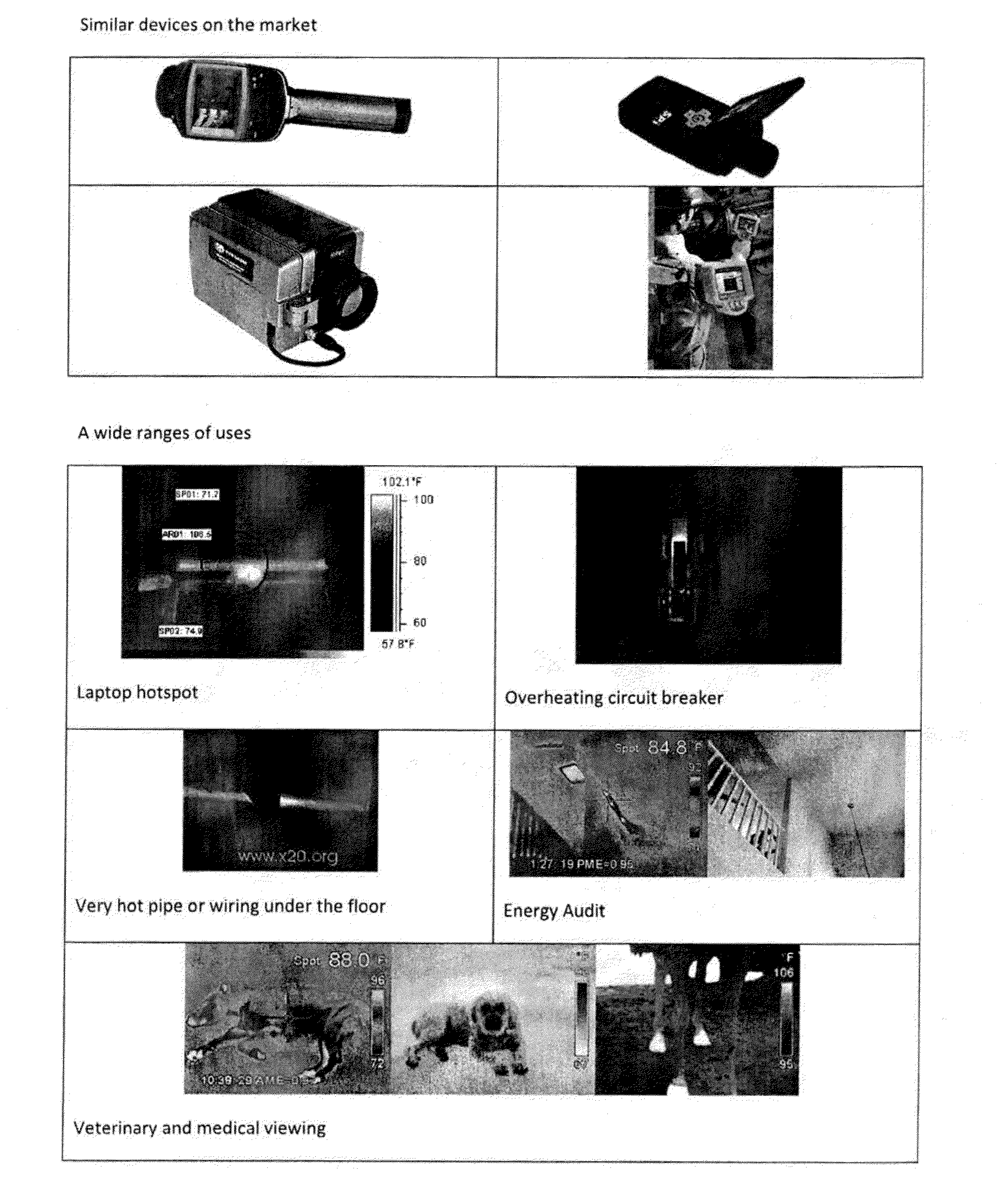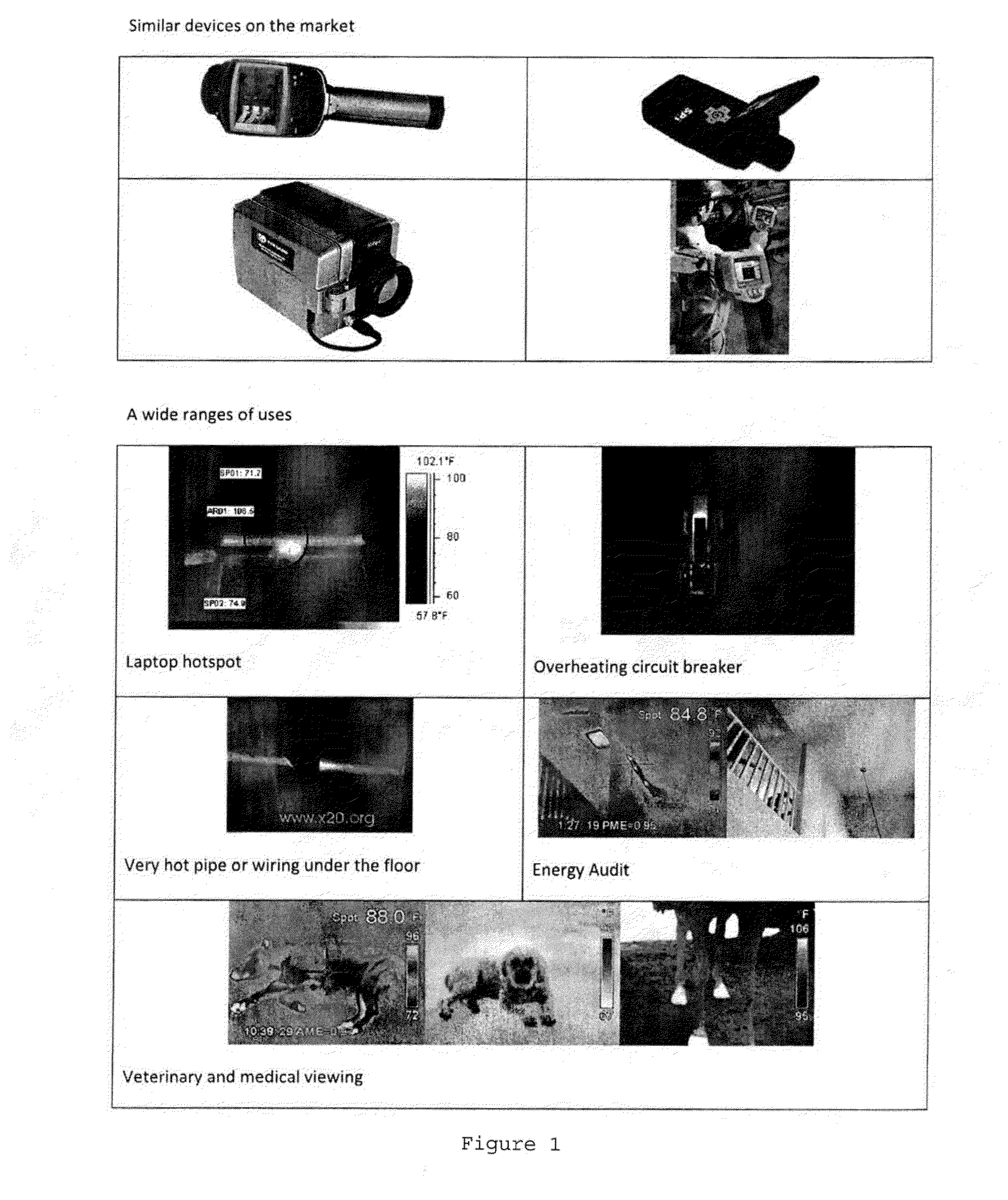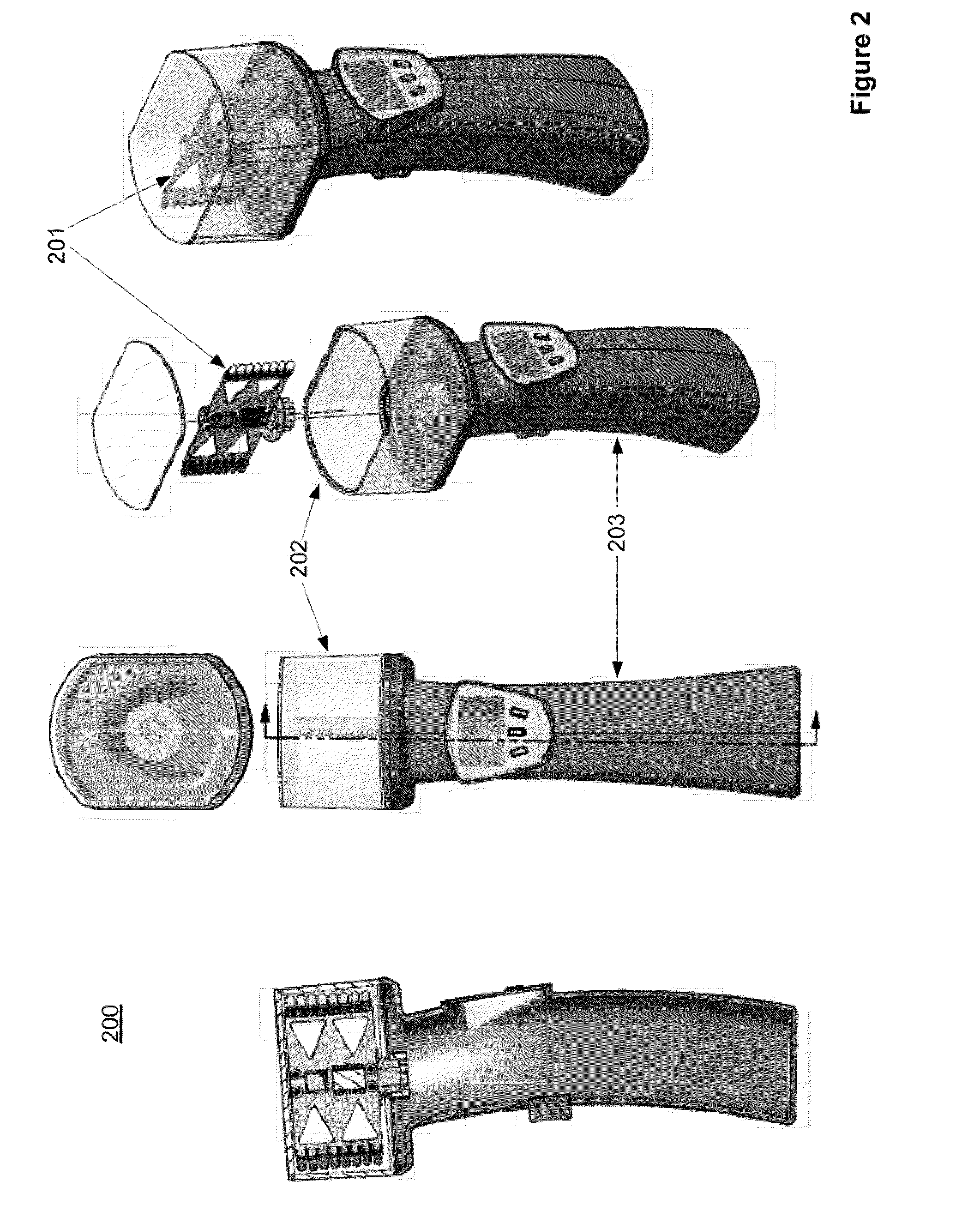Electromagnetic Radiation Detector
a detector and electromagnetic radiation technology, applied in the field of electromagnetic radiation sensor, can solve the problems of high cost and expensive conversion, and achieve the effect of easy chang
- Summary
- Abstract
- Description
- Claims
- Application Information
AI Technical Summary
Benefits of technology
Problems solved by technology
Method used
Image
Examples
embodiment 600
[0074]The multiplexed and synchronized data are then coupled to a rotate-oscillate data on / off block 602. The oscillate data on / off block 602 also comprises magnetic and / or optical circuits and / or other wireless technology that provides bi-lateral communications between the sensor circuit PCB 611 and the handle PCB 612. Hence, communications is facilitated without the use of wires. Per embodiment 600, the communication may be implemented by magnetic induction and / or by light transmission, as illustrated by circuits 607. The communications comprises image information resulting from the EMR signals and control data. The mutual induction also supports power coupling in order to power the sensor circuit PCB 611.
[0075]The multiplexed and synchronized data is received in the block 603 which is an equivalent function as block 602. The multiplexed and synchronized data is then coupled to an in-handle microprocessor and memory, block 604. Block 604 also comprises drivers for USB and hard dri...
embodiment 750
[0078]Per FIGS. 7a and 7b, for the non-hand-held device, the viewer's head and the sensor circuit PCB 702 rotate 360 degrees relative to a base portion or base unit 706. The base unit 706 is the base portion for this embodiment. The base unit 706 has some of the same functions as the handle of the hand-held device. As shown in FIGS. 7a and 7b, 700 is the top view of the non-hand-held device and 750 is the side view of the non-hand-held device. The viewer's head comprises an outer surface 701 and a removable top 703. The outer surface 701 of the device is a clear, frosted, or lenticular (bug's eye) surface. The outer surface 701 is stationary relative to the base unit 706. The sensor circuit PCB 702 rotates with sensors on one or vertical edges. For a non-hand-held embodiment, there are no LEDs. As shown in embodiment 750, there is a removable top 703 that may be removed when the viewer's head is not spinning so the sensor circuit PCB 702 may be removed and replaced.
[0079]The base un...
PUM
 Login to View More
Login to View More Abstract
Description
Claims
Application Information
 Login to View More
Login to View More - R&D
- Intellectual Property
- Life Sciences
- Materials
- Tech Scout
- Unparalleled Data Quality
- Higher Quality Content
- 60% Fewer Hallucinations
Browse by: Latest US Patents, China's latest patents, Technical Efficacy Thesaurus, Application Domain, Technology Topic, Popular Technical Reports.
© 2025 PatSnap. All rights reserved.Legal|Privacy policy|Modern Slavery Act Transparency Statement|Sitemap|About US| Contact US: help@patsnap.com



